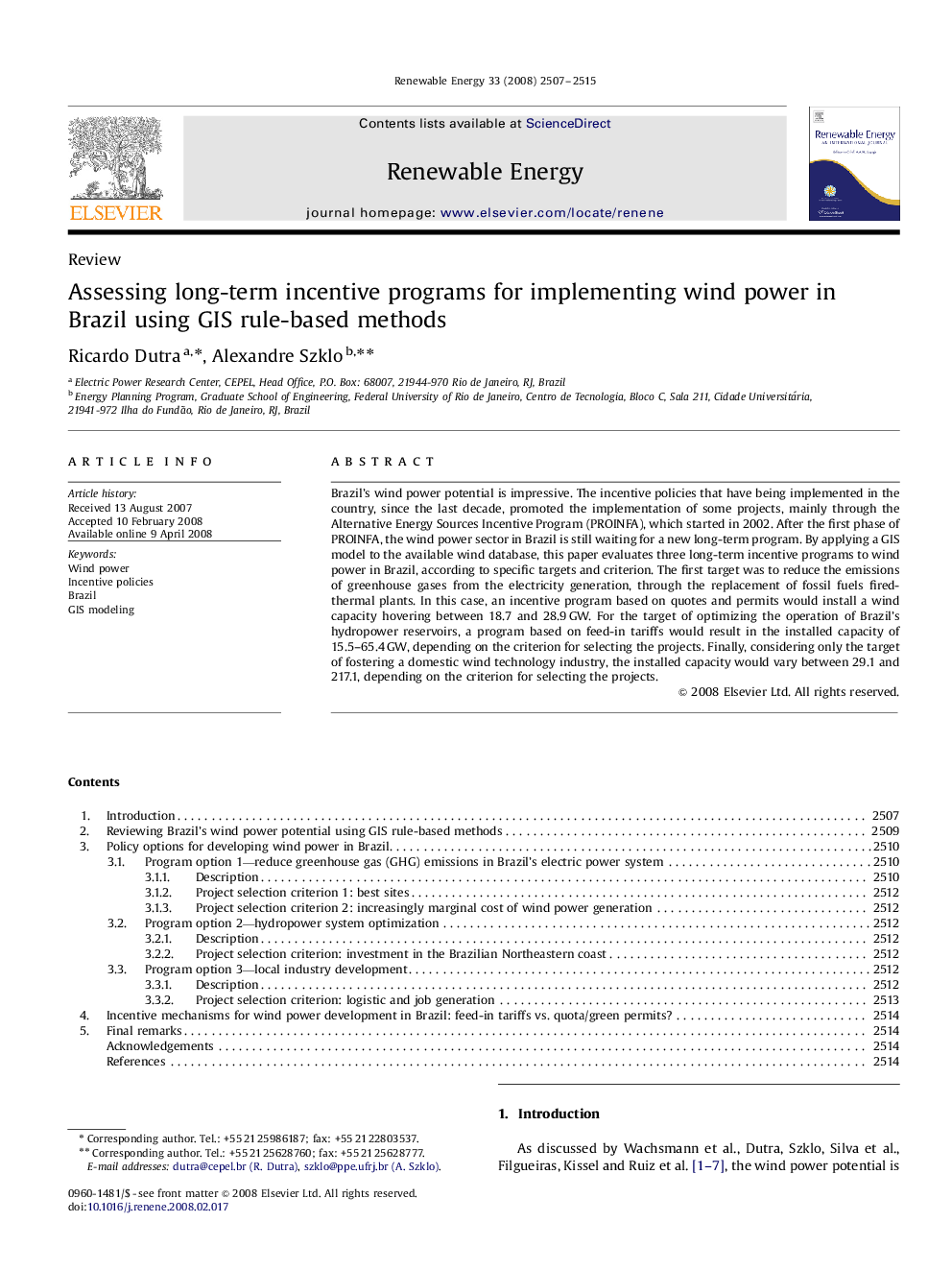| Article ID | Journal | Published Year | Pages | File Type |
|---|---|---|---|---|
| 302542 | Renewable Energy | 2008 | 9 Pages |
Brazil's wind power potential is impressive. The incentive policies that have being implemented in the country, since the last decade, promoted the implementation of some projects, mainly through the Alternative Energy Sources Incentive Program (PROINFA), which started in 2002. After the first phase of PROINFA, the wind power sector in Brazil is still waiting for a new long-term program. By applying a GIS model to the available wind database, this paper evaluates three long-term incentive programs to wind power in Brazil, according to specific targets and criterion. The first target was to reduce the emissions of greenhouse gases from the electricity generation, through the replacement of fossil fuels fired-thermal plants. In this case, an incentive program based on quotes and permits would install a wind capacity hovering between 18.7 and 28.9 GW. For the target of optimizing the operation of Brazil's hydropower reservoirs, a program based on feed-in tariffs would result in the installed capacity of 15.5–65.4 GW, depending on the criterion for selecting the projects. Finally, considering only the target of fostering a domestic wind technology industry, the installed capacity would vary between 29.1 and 217.1, depending on the criterion for selecting the projects.
